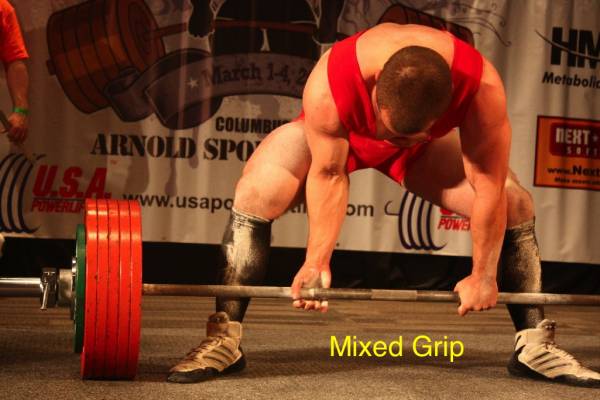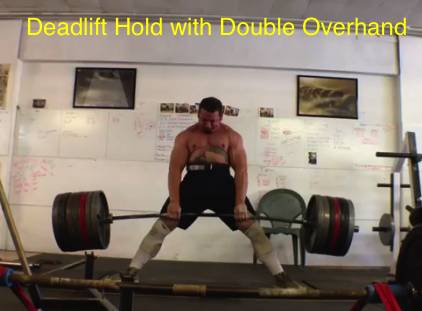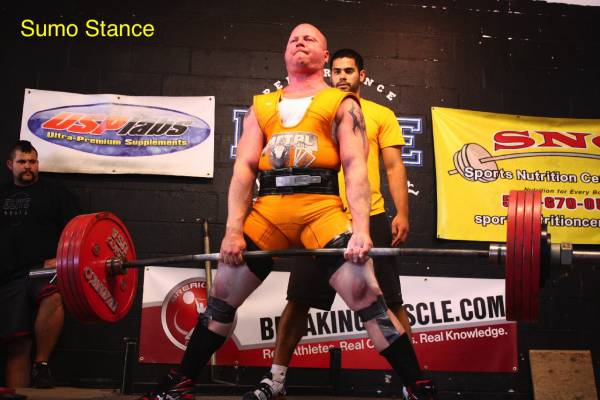Some people are built to deadlift. I’m one of them. I’m 5’7” on a good day, with size-ten feet that are flatter than an X Factor audition, long arms, and massive hands that are equally at home hanging onto branches as bars. Yes, I’m shaped like an ape. I’ve come to the conclusion that I’m essentially less evolved than your average Homo sapien – which explains a few things.
But just because you aren’t shaped like a primate doesn’t mean you should shun this primitive lift. The deadlift is a lift for everyone, but there are variations in the lift and better ways to use these variations according to your goals – and that’s what we will go through today.
Here are six deadlifting questions I get asked on constant basis. I must admit, my responses to these questions over the years have evolved. These are my answers as I now stand, through many errors, much experimentation, and a smattering of experience.
Question #1: Conventional or Sumo?
My response to this question depends on who you are and what you train for. If you are an Olympic weightlifter, your coach probably already tells you to stay away from the deadlift. The deadlift is too similar to the first pull on the clean. Training both, particular for a lifter who is yet to groove his or her pull from the ground, can mess up the neural pathways for the first pull significantly. Couple this with the fact that weightlifters pull from the ground at percentages of their clean and snatch that are perfect for training the deadlift, and there is a strong argument for weightlifters leaving the deadlift well alone.
But I know what it’s like to want to deadlift – to need to deadlift. If you’re anything like me, you’ll get cravings that can only be appeased through picking something particularly heavy up off the floor. So as a weightlifter, if you need to deadlift, my advice would be to go sumo. Keep the movement entirely different and separate from your bread-and-butter lifts.
However, if you are only concerned with your powerlifting total, try both deadlift styles if you haven’t already. It makes sense to train in the one that allows you to lift the most weight off the floor for one repetition. This can be based on a number of factors including gender, relative strengths, general preference, and body type. If you’re shaped like me, it’s probably sumo. If you’re tall and big, it’s probably conventional.
If you are training strongman, my advice would be to train conventional the majority of the time for better overall strength carryover. Plus the sumo deadlift is often disallowed from strongman competitions.
If you are a CrossFitter or athlete going after general physical preparedness, I would find what works for you. If you need to build strength, conventional could well be the answer due to its impressive posterior chain development. However the sumo may be better if longevity is the main aim of your game. This is due to its more forgiving mobility requirements, along with a relative reduction in shear forces and torque.
Question #2: Double Overhand or Mixed Grip or Hook Grip?
 Double overhand grip until you get to the point where you cannot complete the rep because of your grip. Note, this is not the same point as when it gets hard to keep hold. At that point go to the bucket and coat your hands in man-the-f***-up dust. Push past this point until you get to the point where you are genuinely losing grip of the bar and it is affecting the lift. From there on use the mixed grip.
Double overhand grip until you get to the point where you cannot complete the rep because of your grip. Note, this is not the same point as when it gets hard to keep hold. At that point go to the bucket and coat your hands in man-the-f***-up dust. Push past this point until you get to the point where you are genuinely losing grip of the bar and it is affecting the lift. From there on use the mixed grip.
Maintaining this double overhand position for as long as possible is the best possible training for your grip strength. You will find that the point at which you have to switch gets heavier and heavier as your grip improves. If you are also able to push past the pain of the hook grip, then feel free to use it from the start. It is stronger than the standard double overhand yet safer than the mixed grip – a great combination if you can handle it.
Question #3: Straps or No Straps?
Yes, if you need them. If your grip is the only thing impeding you from hitting a much heavier deadlift right now, then please put on a pair of straps and go lift heavy. Exhaust all the above grip options first though.
 Some people argue that if the body cannot grip the bar, it has no business lifting the bar. I agree in the fact that caution is required. One of the dangers of straps is burnout from going heavier than the body can handle, especially if using them for partial deadlift reps. I disagree in the fact that for many people controlled use of straps is acceptable and useful in order to get stronger. This, after all, is much more the purpose of the deadlift than the grip training you also happen to receive.
Some people argue that if the body cannot grip the bar, it has no business lifting the bar. I agree in the fact that caution is required. One of the dangers of straps is burnout from going heavier than the body can handle, especially if using them for partial deadlift reps. I disagree in the fact that for many people controlled use of straps is acceptable and useful in order to get stronger. This, after all, is much more the purpose of the deadlift than the grip training you also happen to receive.
Point of note – I don’t want to see you use straps if you do no additional grip training work. Using straps is recognizing a weak link in your chain, one that you need to strengthen through other grip work. Try adding in farmer’s walks, static holds at the top of a deadlift, fat bar or Fat Gripz deadlifts – or even all three.
Question #4: Belt or No Belt?
Depends what you’re using it for. To protect your back? No belt. Learn to breathe properly. Learn to create intra-abdominal pressure, to brace the spine without the aid of a belt.
As an aid to lift more weight? Go for it. Not from your first lift, but not only for your last few. Learning to breathe hard with and against the belt to make the most of it is just as much of a skill as learning to breathe without one.
Question #5: Touch-and-Go or Drop the Bar?
I would put money on the fact that your position off the floor from your second rep onwards is not as good as your initial rep. Dropping the bar allows you to reset yourself into a consistent lifting position each time. Technique -> Consistency -> Intensity.
A second point relates to recovery. Deadlifts are hard enough to recover from already. The lowering of the bar, the eccentric part of the lift, adds to this recovery time or even multiplies it. You have already done the lift, and the hard part of it at that. If you are able to drop the bar where you train, it makes sense to me to do so. Therefore, in strength training, I would advise dropping the bar.
If you must practice touch and go (and I’m thinking of CrossFit workouts here), keep it light. There is little point using this technique with heavy weight during training.
Question #6: Heavy or for Reps?
 Mostly heavy. Heavy deadlifts are good for the soul. However, don’t go for max singles all the time. In fact, you should only be hitting max singles during testing, i.e. at a competition. During your training, it’s just not worth it. Once again, the impact on your recovery is simply not worth the squeeze for the small increase in weight. Also, the likelihood of being out of position on a true one rep max deadlift is far greater than if you are going for a heavy double or triple.
Mostly heavy. Heavy deadlifts are good for the soul. However, don’t go for max singles all the time. In fact, you should only be hitting max singles during testing, i.e. at a competition. During your training, it’s just not worth it. Once again, the impact on your recovery is simply not worth the squeeze for the small increase in weight. Also, the likelihood of being out of position on a true one rep max deadlift is far greater than if you are going for a heavy double or triple.
Deadlift for reps can must also be hit with consideration. The opposite consideration, in fact – more is less. Hitting deadlifts for fifty-plus reps in a workout for time is a recipe for disaster.
For those training from a strongman perspective, I believe that deadlifting between a range of low reps (2-3) and high reps (12-15) and with a range of objects is ideal and important.
I’m glad we’ve cleared all that up. We’ve looked at how to lift the bar, how to lower the bar, for how many reps, how to grip the bar, and which additional aids to use. All that’s left is for you to go lift the damn thing.
Have fun, be sensible, and let me know how you get on!
Photos 1,2&4 courtesy of Becca Borawski.
Photo 3 courtesy of Chris Duffin.






